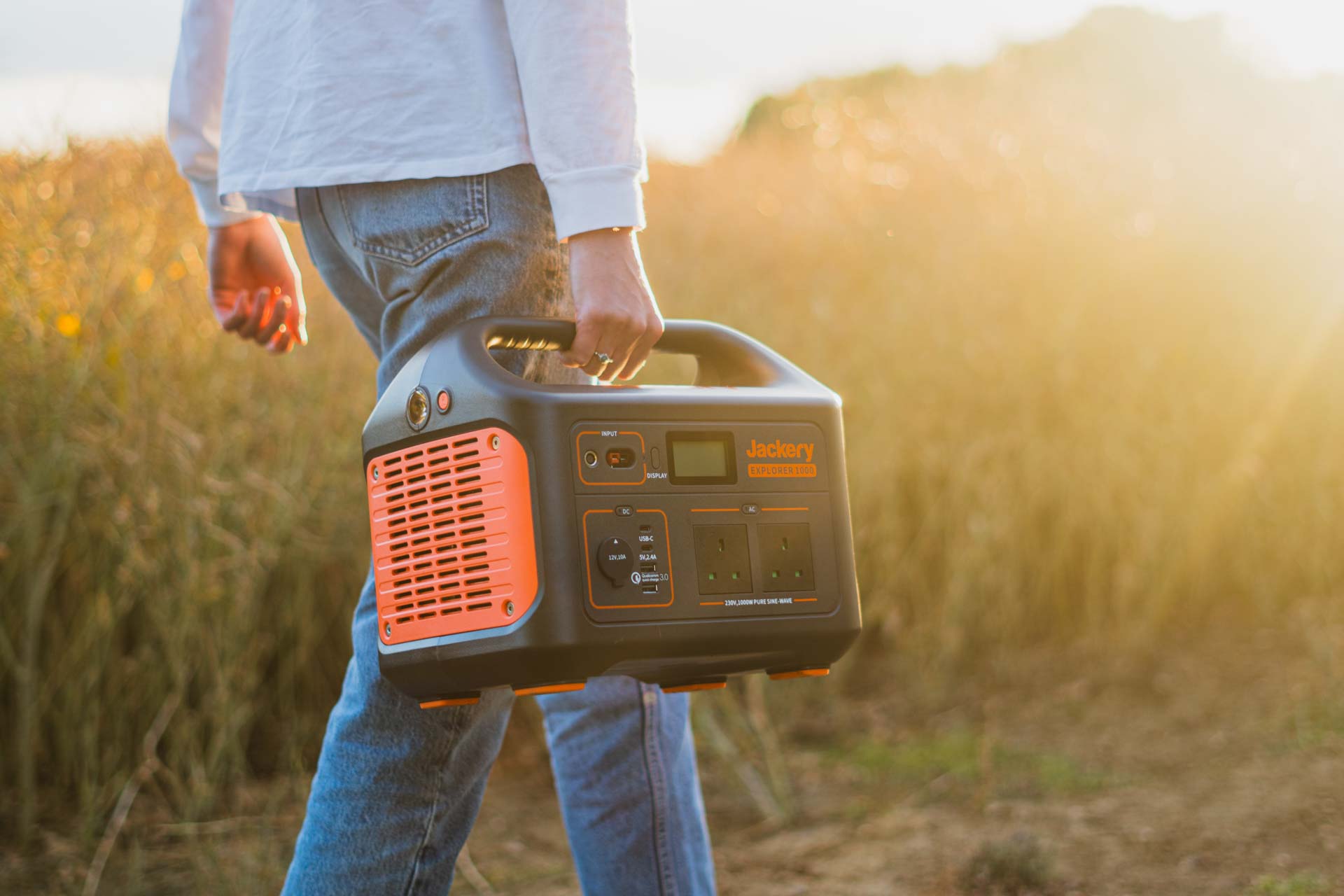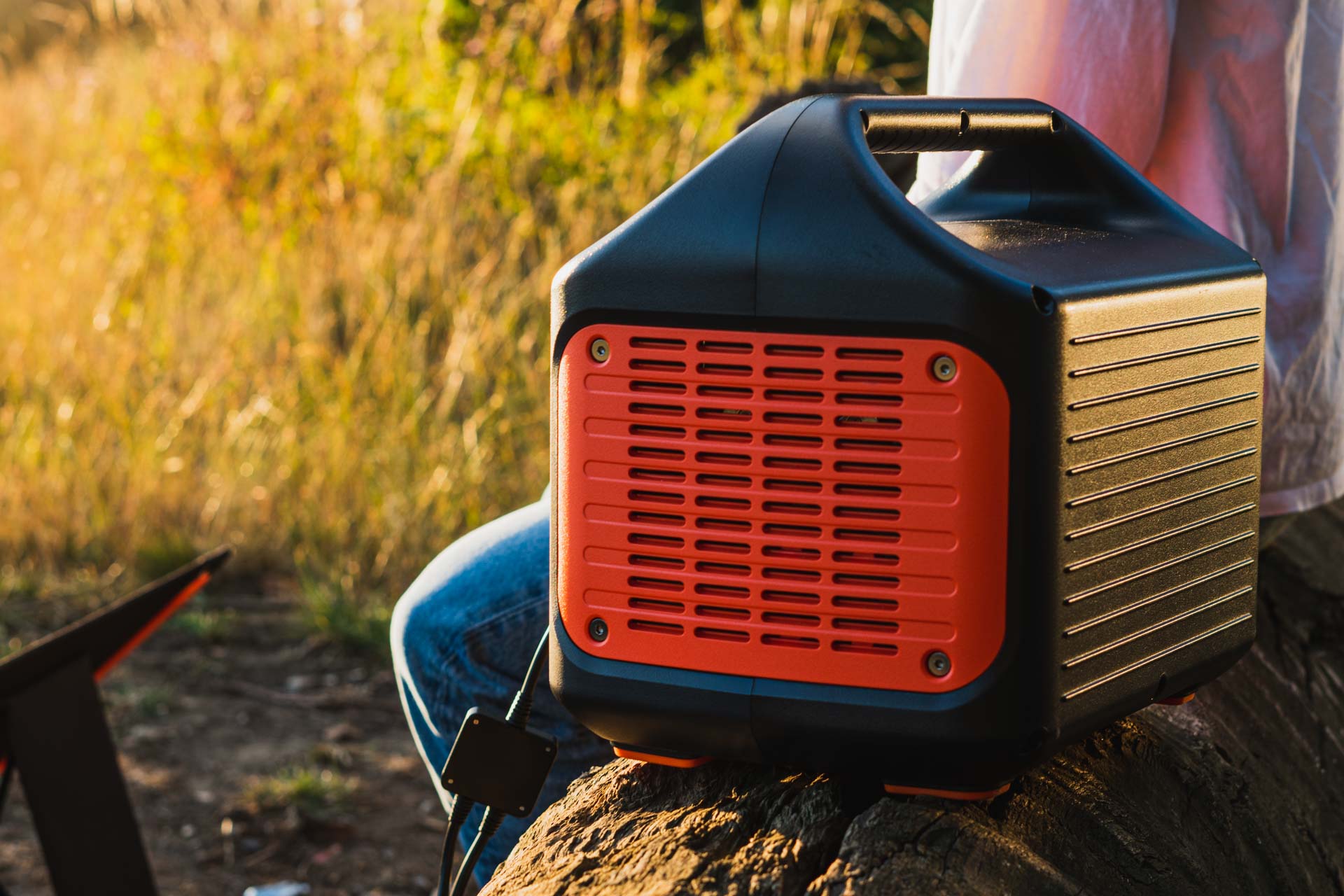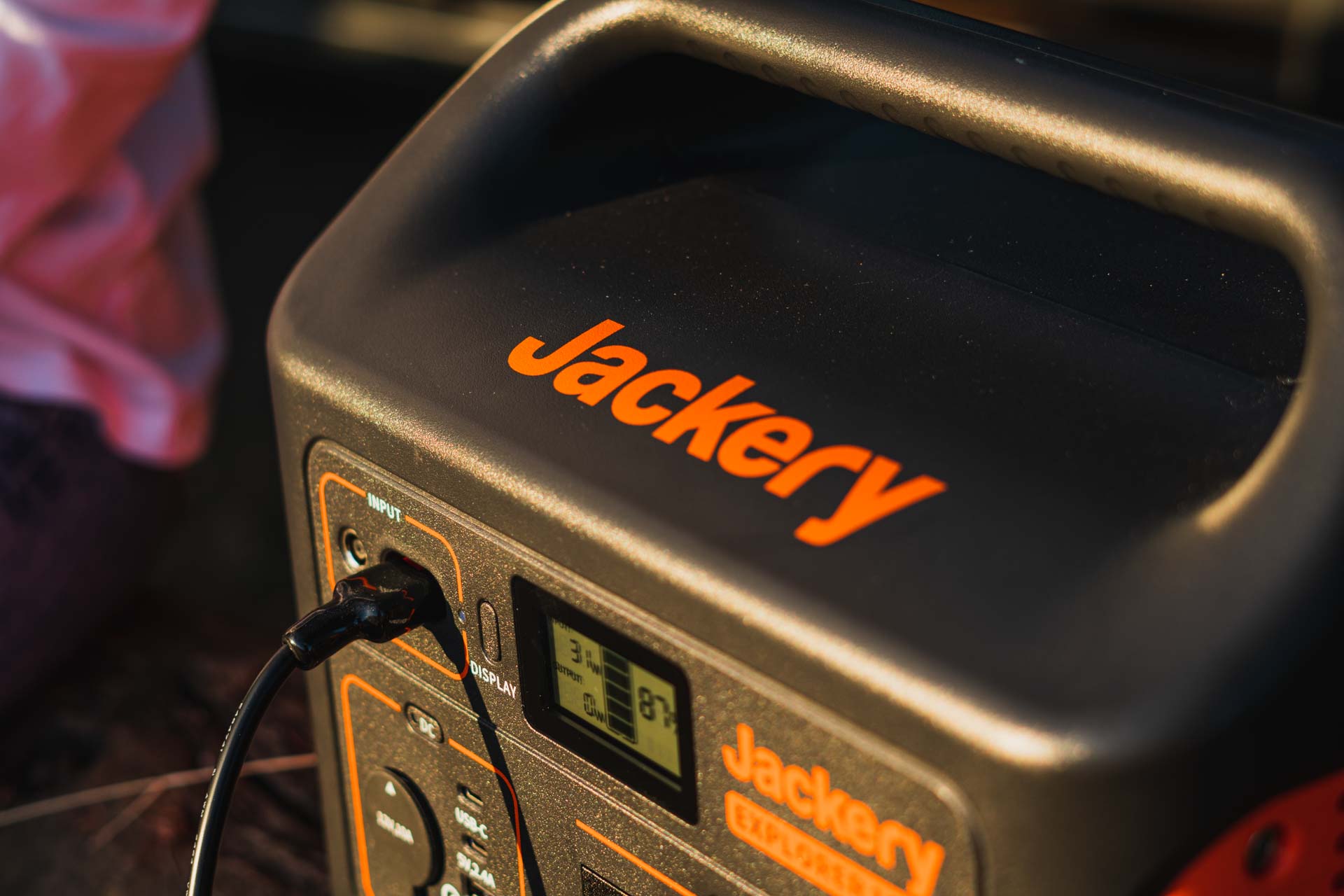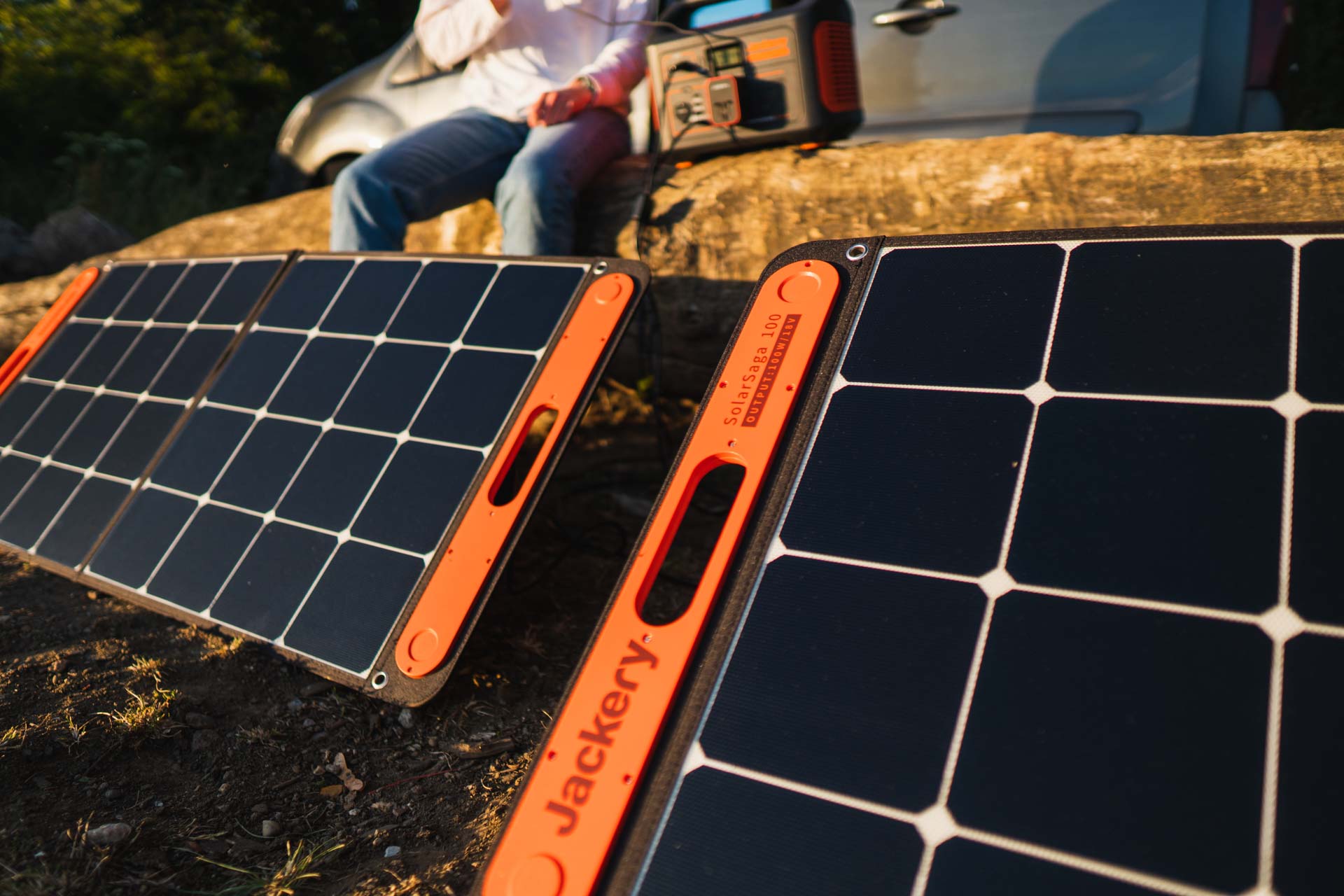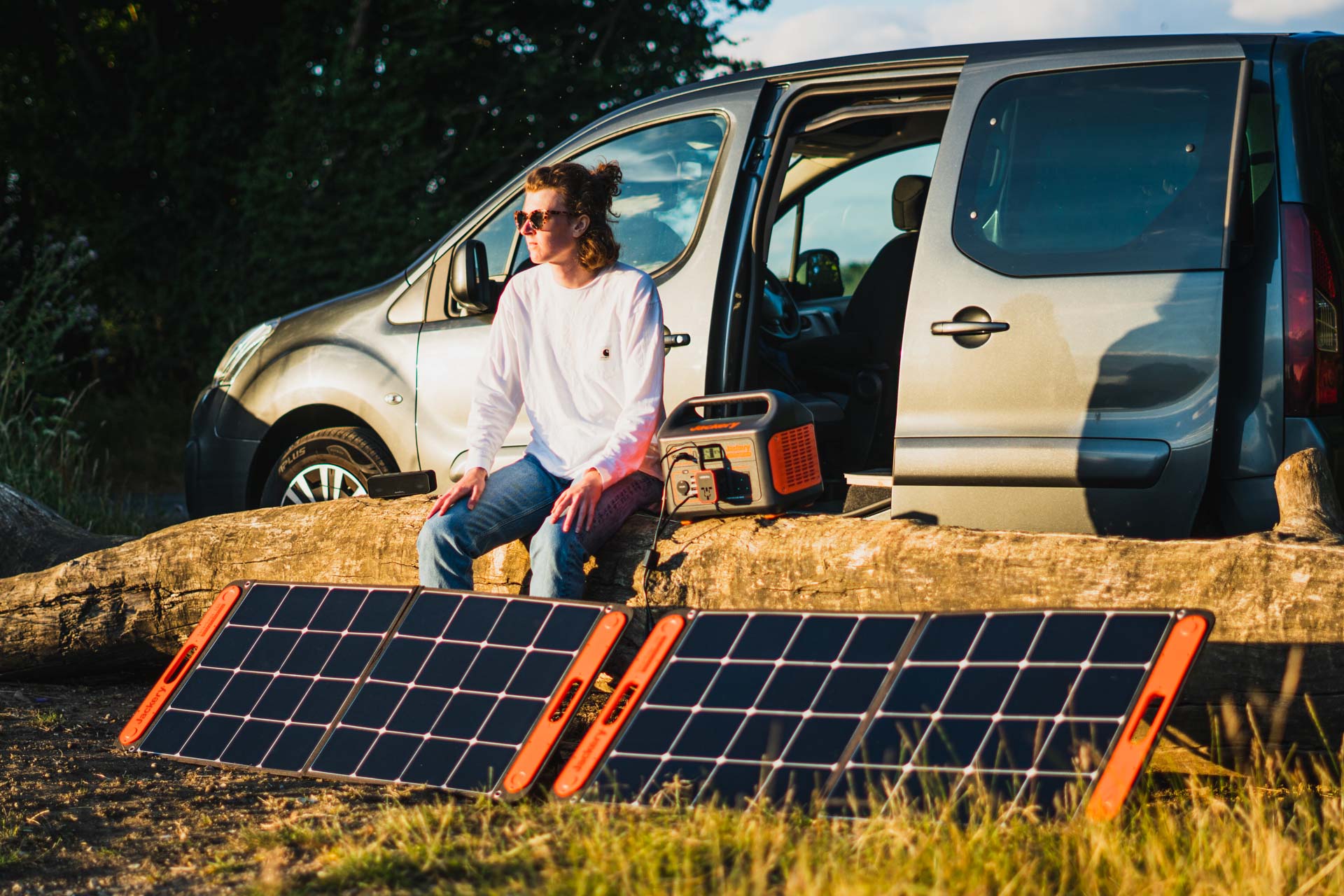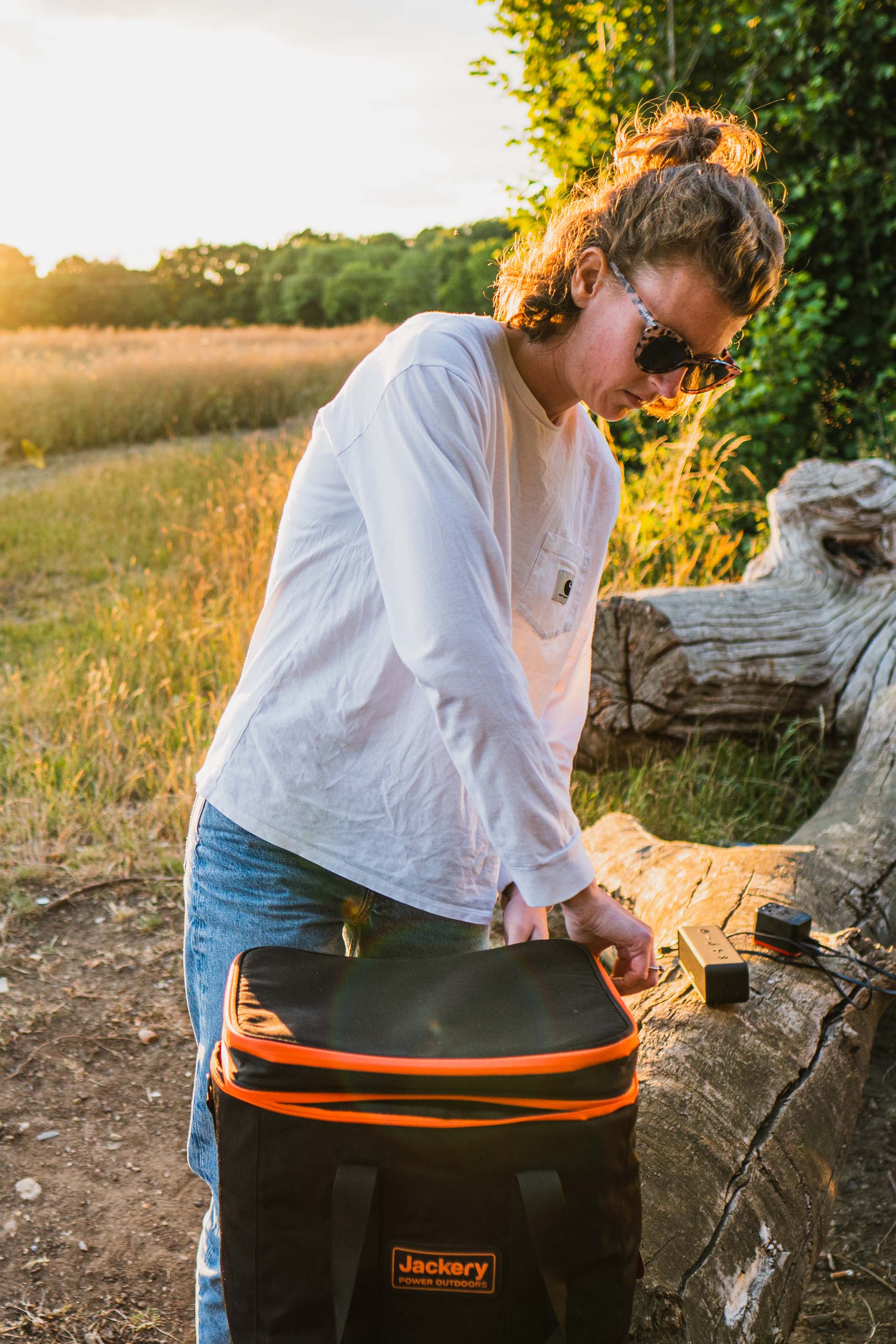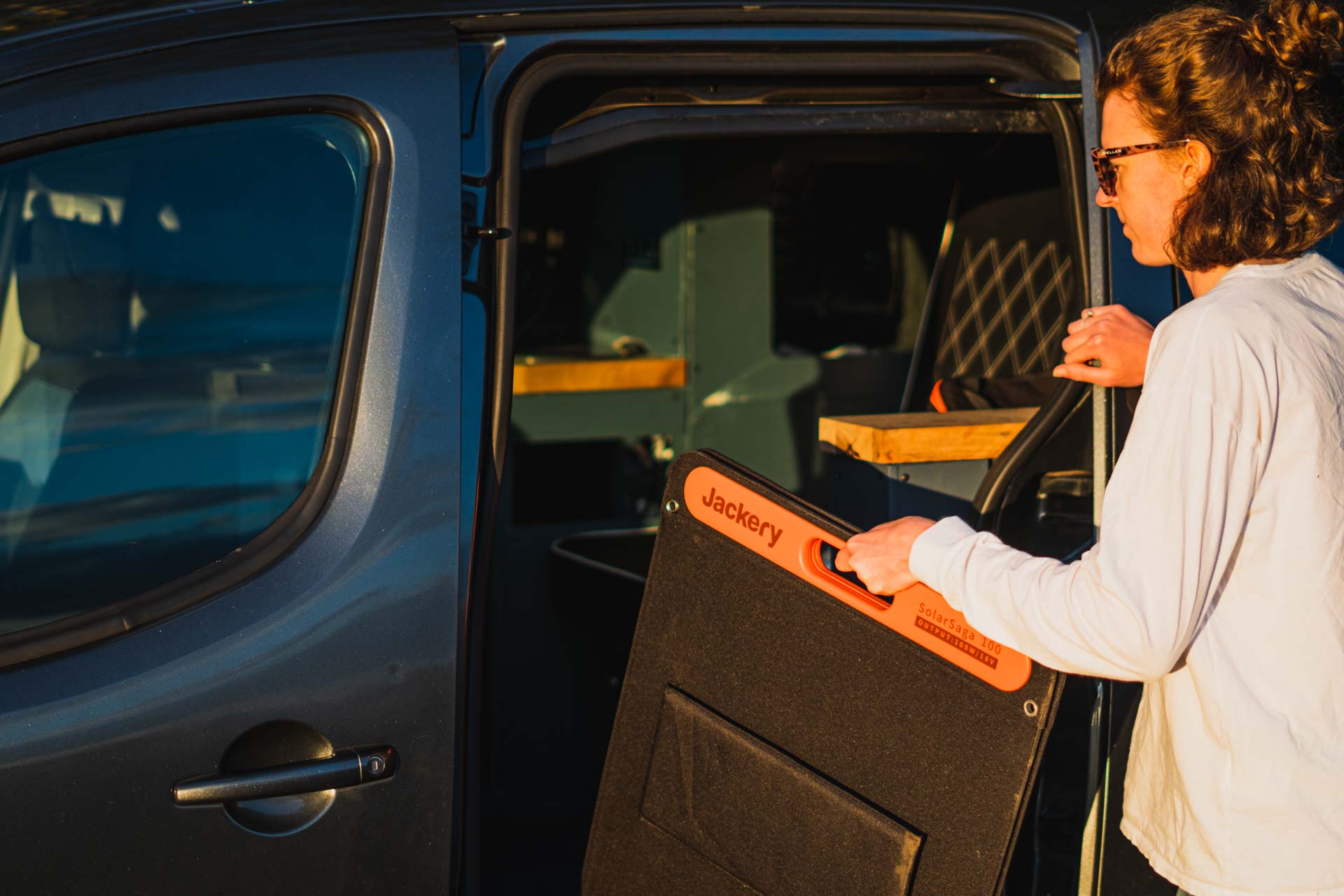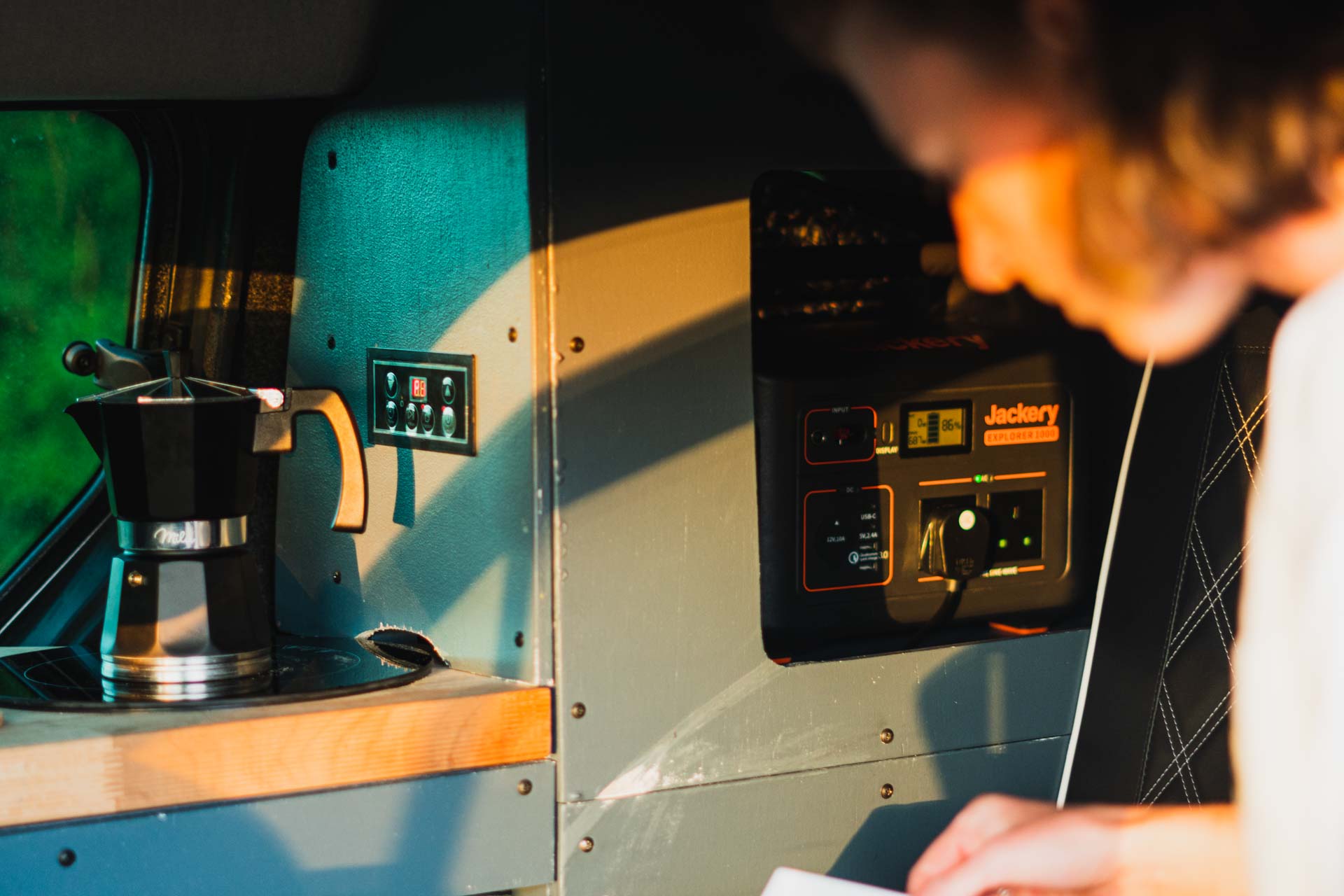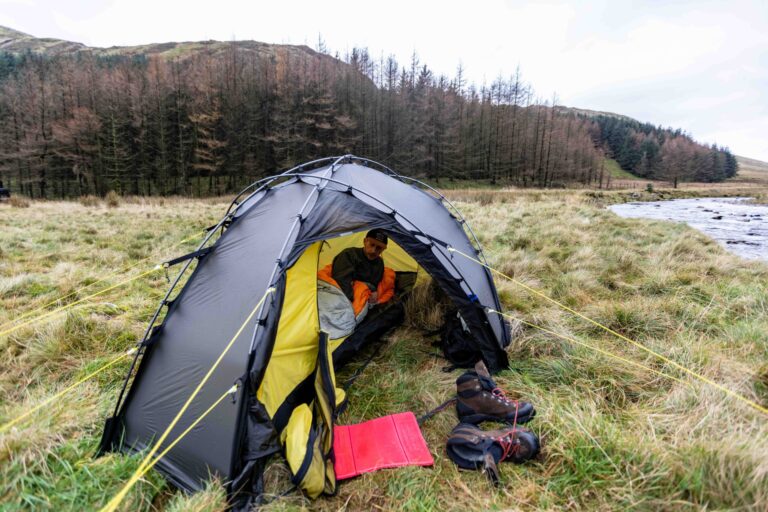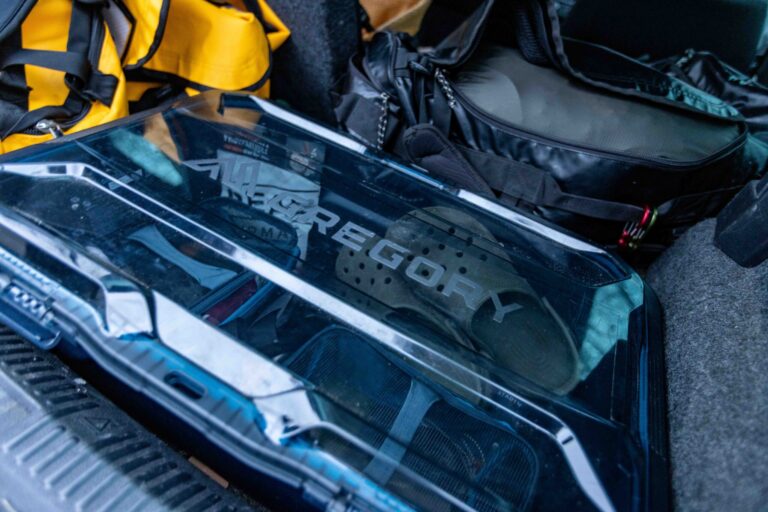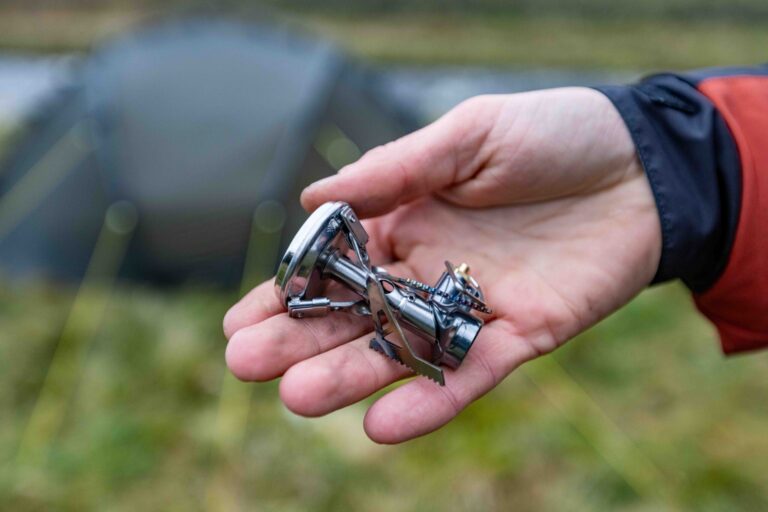With more and more people looking to get away from mains hook ups, whether that’s for campervan trips or large basecamp setups, there’s no doubting that portable power solutions have come a long way in recent years and one company that seems to be at the forefront of this portable battery development is California-based Jackery. From what we’ve seen, their ‘Explorer’ range of all-in-one solar power stations are able to harness the sun’s energy extremely effectively and efficiently.
Since 2012, Jackery has been creating a range of power stations, solar panels and accessories to ensure you’re never left without juice when you’re overnighting well away from a traditional power supply. The Jackery Solar Generator 1000 comprises of the Portable Power Station Explorer 1000 and two SolarSaga 100W units that aim to create a (theoretically) permanent source of green power from the sun’s rays.
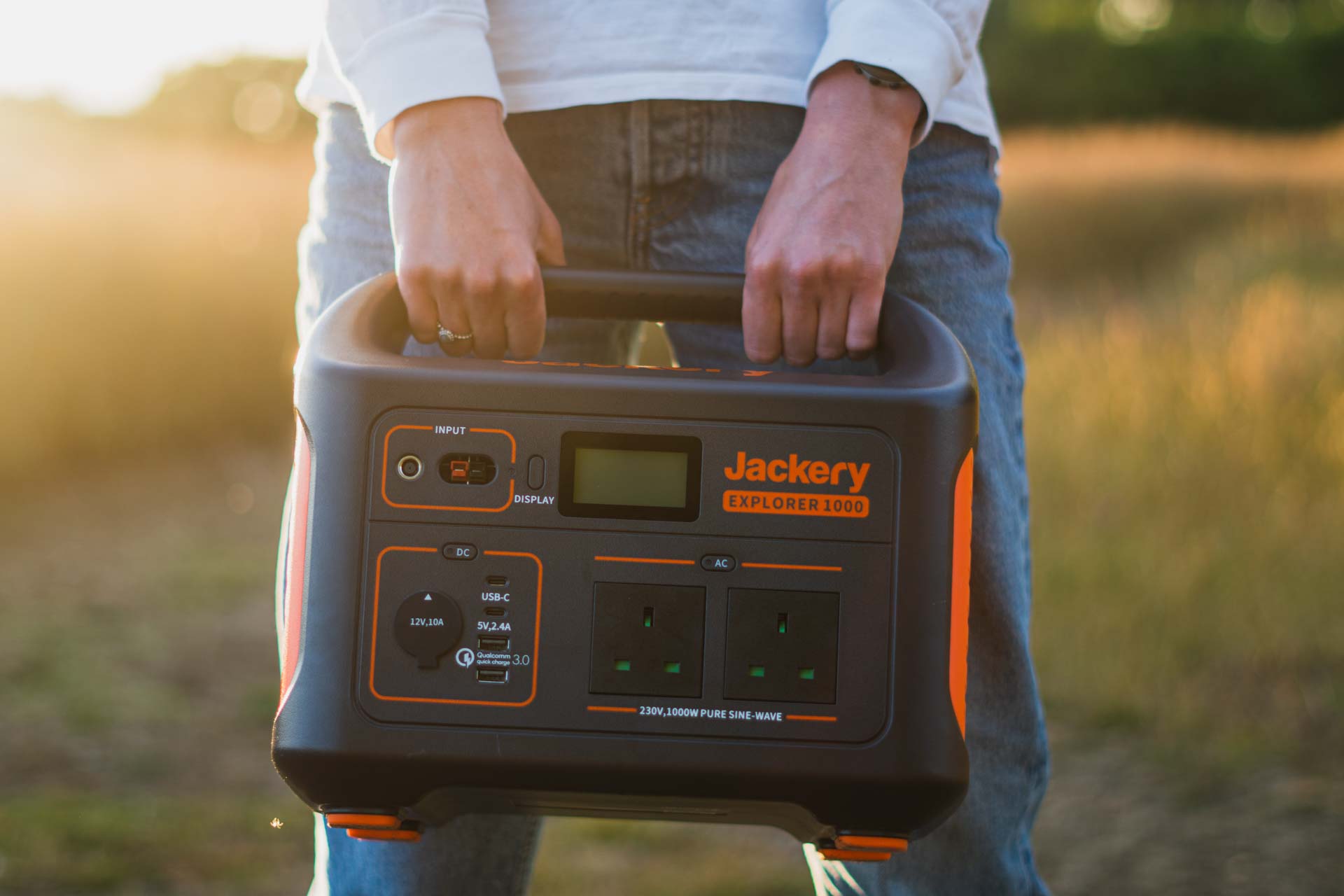
Explorer 1000 Power Station
First of all, let’s take a look at this technical battery. Now, battery power might not seem like the most interesting tech out there, but there’s a fair bit going into this battery to help protect the otherwise vulnerable lithium cells from damage, so bear with us as we get a little geeky. Protective systems include: over/under charging blocks, heat and shock protection and, as you’d expect from an outdoor-focused battery, IP65 water resistance.
Related: How to Convert a Van Into An Off-Grid Camper
The Explorer 1000 is equally kitted out on the power front, too. As the name suggests, the power station comes with a 1,002Wh capacity meaning you’ve got more than enough power to cover yourself and your electronics for multiple days away from a mains supply. This power, Jackery claims, is enough to charge a camera 50 times, a phone 100 times or keep a five watt light going for 76 hours.
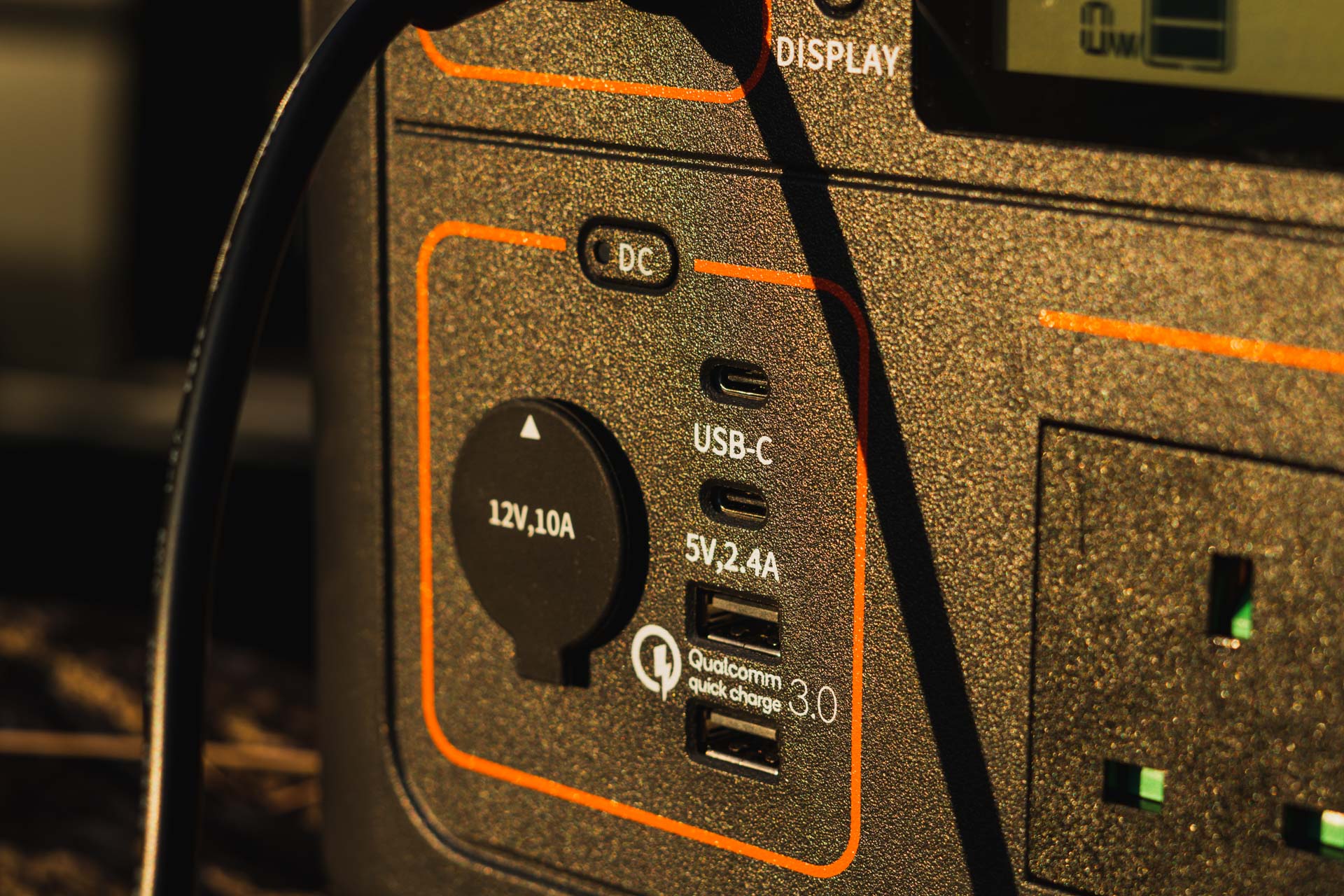
Power comes from various output ports that are found on the front of the battery pack. These ports include two USB-C and two standard USB ports (one of those being Quick Charge 3.0). Then, in terms of 230 volt ‘mains’ power, two standard plug sockets are featured to help keep higher capacity appliances, such as mini fridges or coffee makers, powered up. Both the AC (230 volts) and DC (12 volts) power can be turned on and off through simple press buttons found about the outputs.
Speaking of AC/DC power, the Explorer 1000 comes with an impressive inverter that can comfortably handle both. This inverter has been rated to 1,000 watts which, to us, is more than enough to power even the most demanding appliances. If you do find yourself needing more wattage then the inverter has a surge rating of 2,000 for emergency use.


